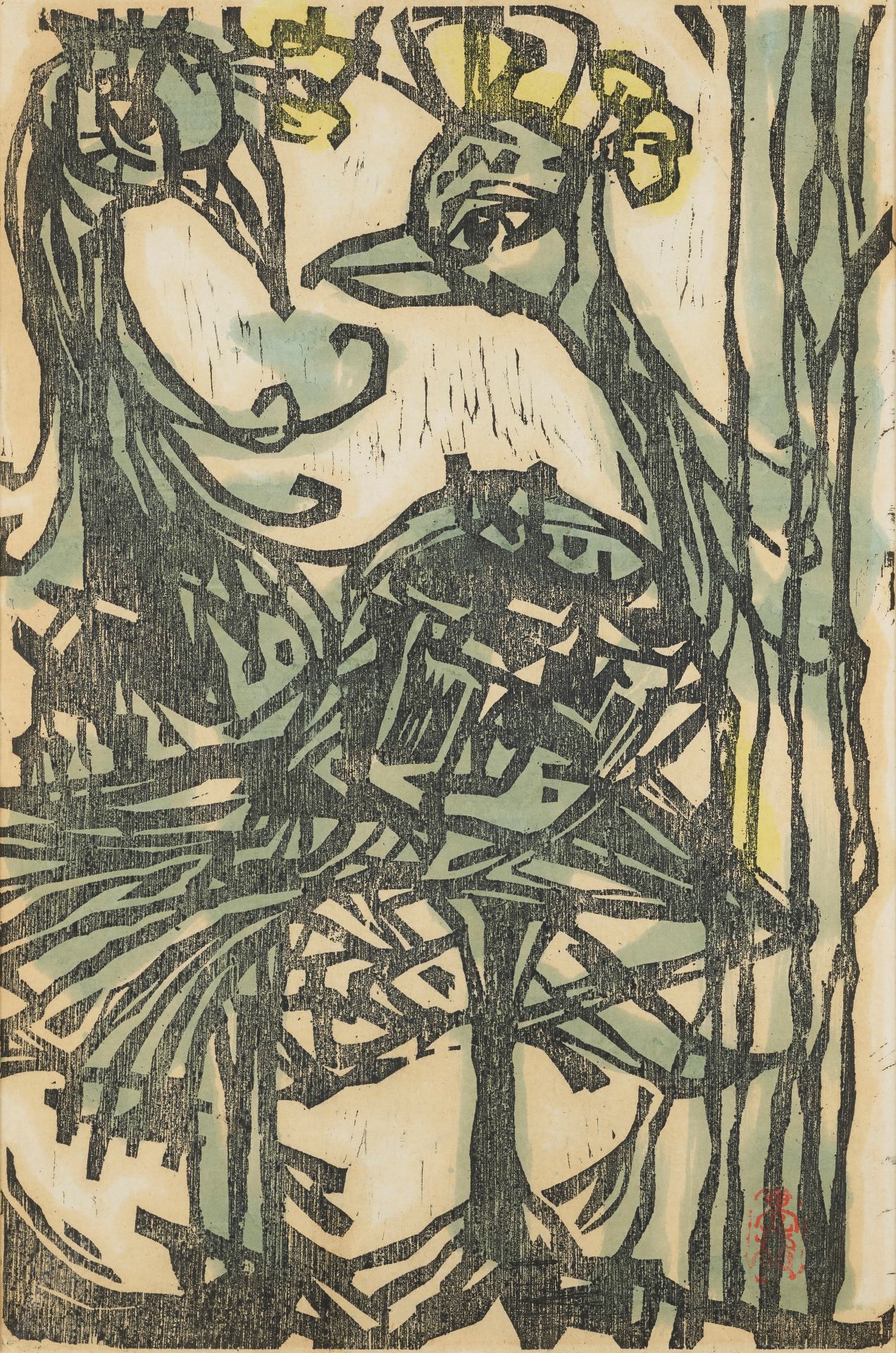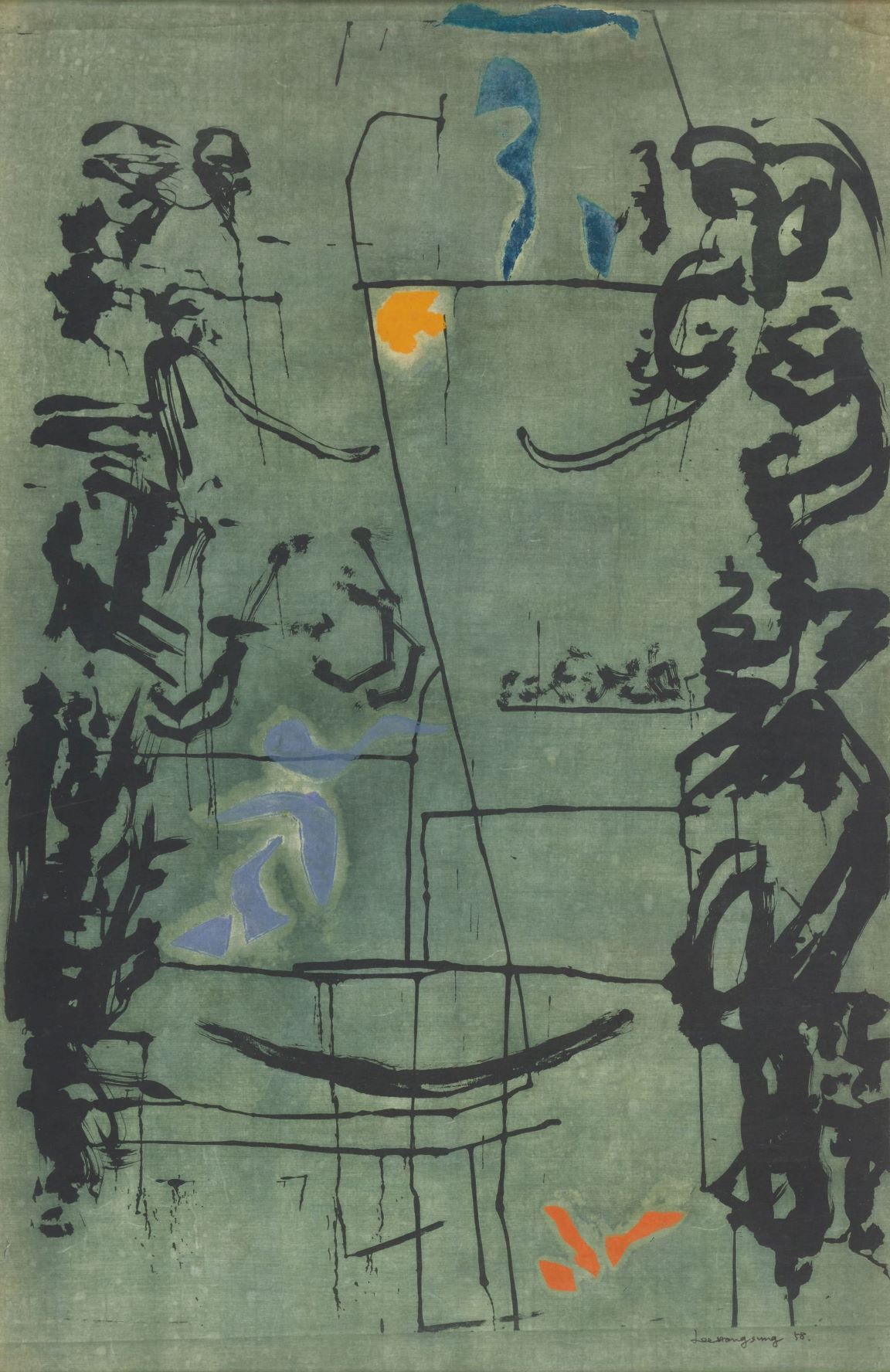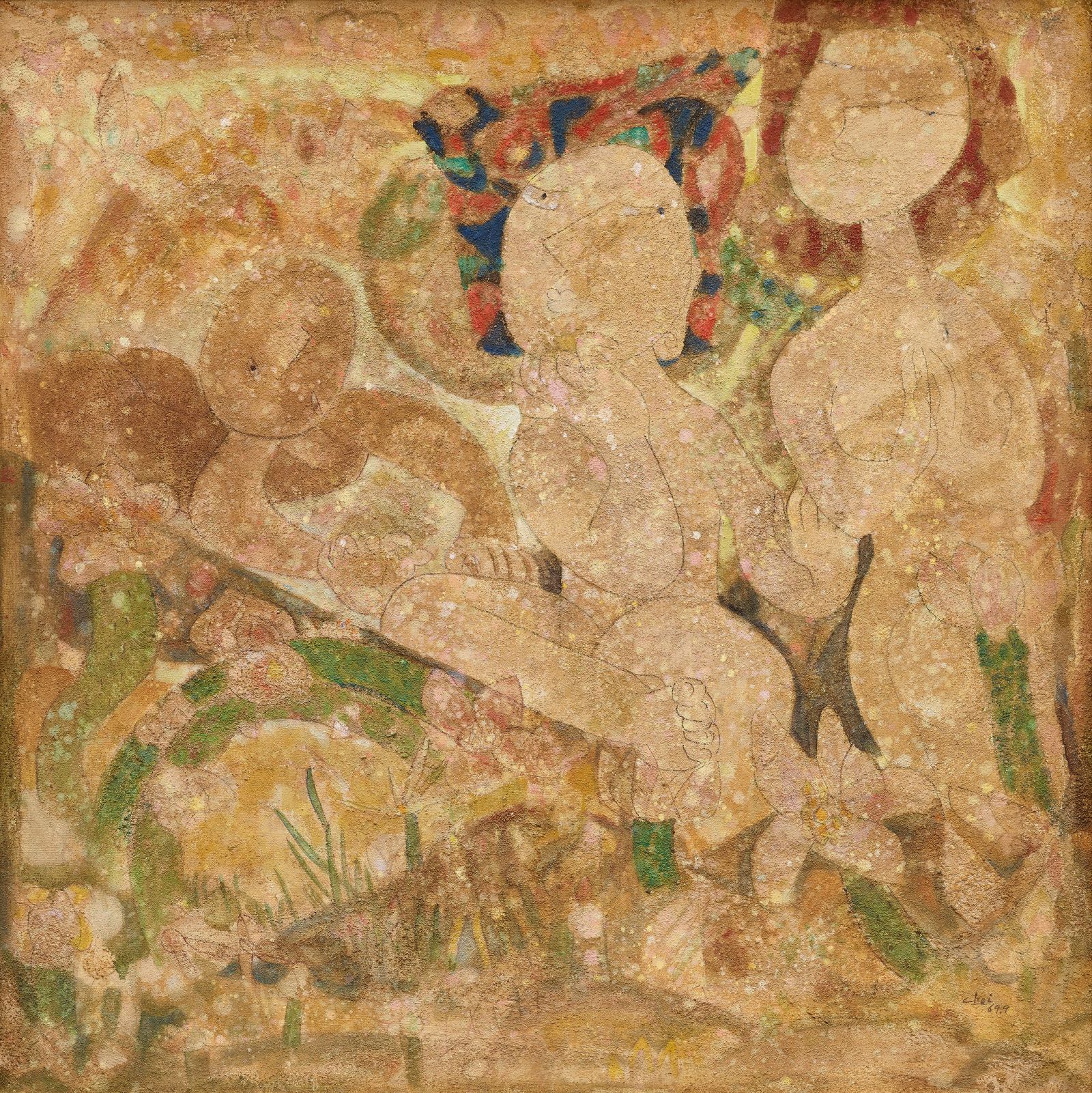
The First Korea Prints Association Exhibition, Leaflet, 1958. Image provided by Kimdaljin Art Archives and Museum
Korea Prints Association
* Source: Multilingual Glossary of Korean Art. Korea Arts Management Service
Related
-

Chung Kyu
Chung Kyu (1923-1971) was born in Goseong, Gangwon-do. He graduated from Gyeonggi Public Commercial School in 1941 and moved to Japan to attend the Department of Western Painting at Teikoku Art School. He returned to Korea in 1944 and stayed in Busan during the Korean War, moving to Seoul to be a researcher at the Korean Visual Art Research Institute from 1954 to 1962. He studied prints and ceramics in Rochester, New York, USA on a one-year invitation from the Rockefeller Foundation. After he came back, he expanded his art from painting to prints and ceramics. He was a founding member of the Korea Art Critics Association in 1956, the Korea Prints Association [Hanguk panhwa hyeophoe] in 1958, and the Korean Art Critics Association in 1960. He established the Institute of Korean Traditional Ceramics Craft in 1960. He contributed his prints to the Contemporary Art Exhibit sponsored by Chosun Ilbo and created ceramic murals at Oyang Building and Namsan Liberty Center, leaving an important mark on the development of public art in Korea. He worked as an art lecturer at Ewha Woman’s University from 1955 to 1961, at the department of craft, Hongik University from 1960 to 1963, and as a professor of the Department of Ceramics at Kyung Hee University from 1963 to 1971.
-

Yoo Kangyul
Yoo Kangyul(1920-1976) was a Korean printmaker and dye craftsman who engaged in diverse activities from the late 1940s through the early 1960s. He entered the Azabu Middle School in Tokyo in 1933 and graduated from the Craft and Design Department at Nihon Art School in 1944. In 1941, while studying in Japan, Yoo’s work was selected for the Japanese Craftspeople Association Exhibition. He received apprenticeship education on dyeing at the Saito Craft Institute. After returning to Korea, Yoo worked as a principal lecturer and researcher at Lacquerware Inlaid with Mother-of-Pearl Training Center and Korean Plastic Arts and Culture Research Institute. In 1958, he received Rockefeller Foundation scholarship to study printmaking at New York University and the Pratt-Contemporaries Graphic Art Centre. He was later appointed as a professor at Hongik University and served until 1976. He was also active as an architectural advisor and interior designer. Among his notable works are the exhibition design for Anti-Communist Exhibition Hall of the Freedom Center (1966) and the Ceramic Mural for the National Assembly (1974). Yoo Kangyul founded the Korean Contemporary Printmaker Association [Hanguk hyeondae panhwaga hyeophoe] in 1968 to develop Korean printmaking. Moreover, he served as a judge of the Korean Art Grand Award Exhibition in 1969, a standing committee member for the construction of the National Museum of Korea in 1970, and a head judge for the National Tourist Folk Art Competition from 1971 to 1976. He won many awards including the Minister of Education Award (1953) and the Prime Minister Award (1954) at the National Art Exhibition (Gukjeon) and a presidential prize for the interior design of the National Museum of Korea (1970). Yoo did not hold a solo exhibition during his lifetime, but in 1978 Kyang Yul Yoo’s Exhibition was organized by his students and the National Museum of Modern Art, Korea (now MMCA). In 1981, Collection of Works by Yoo Kangyul was published. In 2000, his bereaved family donated Yoo’s collection to the MMCA and the National Museum of Korea.
-

Lee Hangsung
Lee Hangsung (1919-1997) was a Western-style painter and printmaker who pioneered Korean contemporary printmaking and a leading publisher who promoted the publication and dissemination of art books. He learned painting from Kwon Jungrok, a Western-style painter active in Daejeon, and worked as a stage artist at Dongyang Theatre in Seoul. In 1945, he established a publishing company Munhwa Gyoyuksa and published art textbooks for elementary, middle, and high schools and art books such as Seoyang misulsa (History of Western art) and Segye misul jeonjip (Collection of world art). In 1956, he established another publishing company Sinmisulsa and published Sin Misul (New art), the first art magazine in Korea, thus exerting influence upon the formation of the culture of art criticism. Lee Hangsung led the founding of the Korea Prints Association [Hanguk panhwa hyeophoe] along with Yoo Kangyul, Chung Kyu, Choi Youngrim, and others. In 1958, Lee held the first solo exhibition of lithographs by a Korean artist. Winning an honorable mention for the lithograph Tender Heart of the Buddha at the fifth International Biennial of Contemporary Color Lithography held in 1959 at Cincinnati Art Museum in the U.S., he secured his place in the Korean art scene as a printmaker. Later, he produced print works using Joseon-era wooden blocks that were used for printing old books, letterheads, book covers, and those for imprinting patterns on rice cakes. In his later years, he continued to create works that revealed his Eastern spirituality by pictorializing Chinese characters, such as “念” (yeom, meaning idea), “情” (jeong, meaning affection), “思” (sa, meaning thought), and “心” (sim, meaning mind). Lee contributed to the development of art education by serving as president of the Korean Art Education Association [Daehan misul gyoyuk gyeophoe] and chairman of the Korean Committee of the International Society for Education [Gukje misul gyoyuk hyeophoe hanguk wiwonhoe].
Find More
-

Park Sookeun
Park Sookeun (1914-1965) graduated from Yanggu Elementary School and was a self-taught artist. In 1932, he began his career when he was selected for the 11th Joseon Art Exhibition [Joseon misul jeollamhoe], an event which he would subsequently be chosen for eight times. He founded Juhohoe (1940-1944) in Pyongyang with Choi Youngrim and Chang Reesouk. His work earned a special award for the second National Art Exhibition (Gukjeon) in 1953 and he became a Noteworthy Artist at the National Art Exhibition in 1959 and a judge in 1962. Park Sookeun’s works in the 1940s portrayed the humble lives of Koreans or somewhat resigned scenes of everyday life. After the Korean War, he often used thick gray lines to draw such work, often featuring subjects such trees, girls, and women. His work utilized various techniques, such as the elimination of shadow, emphasized outlines, or thickly daubed colors applied with a granite-like finish. In the 1960s, his unique expressive technique developed further, and enabled him to subtly capture Korean sensibilities through scenes of the everyday lives of girls and mothers in Korea. Park Sookeun excelled in describing the lives and sensibilities of ordinary Koreans.
-

Korean Contemporary Printmakers Association
The Korean Contemporary Printmakers Association was founded in January 1968 to promote the distribution of and understanding about modern Korean prints while establishing a network between members. It was led by artists such as Kang Whansup, Kim Minja, Kim Sangyu, Kim Choungza, Kim Chonghak, Kim Foon, Bae Yoong, Suh Seungwon, Yoo Kangyul, Youn Myeungro, Rhee Sangwooc, Chun Sungwoo, and Choi Youngrim. It has played an important role in the revival of Korean prints, including holding regular association exhibitions, discovering and supporting artists, sharing knowledge on print through training sessions, and planning international exchange exhibitions. It has helped to produce leading artists in the Korean print field and organized joint exhibitions with various overseas artists to create a place for art exchanges. In 1996, the association announced regulations on original prints to provide an institutional system for the global internationalization of modern Korean print and the identification of Korean prints. Currently, more than 400 members are active.
-

Choi Youngrim
Choi Youngrim (1916-1985) was the first son of a wealthy Oriental medicine pharmacist in Pyongyang. He joined a small art community at Gwangseong High School in Pyongyang and submitted a print to the Japanese Print Association. An oil painting of his was selected for the Joseon Art Exhibition [Joseon misul jeollamhoe] in 1935 and several more were selected through 1943. After independence, he participated in the National Art Exhibition (Gukjeon), the Creative Art Association Exhibition, and the Figurative Art Exhibition, and taught as an art professor at the College of Fine arts at Chung-Ang University. He simplified and reconfigured geometric objects using black outlines and flat planar forms in the 1950s. In the 1960s, he switched to color painting, with motifs from traditional folklore, such as Shimchung or The Story of a Tiger, and developed a painting technique of colourful painting by spreading oil on the canvas. He depicted primitive and innocent Utopian landscapes using the simple shades of ochre, and a soft smearing texture, often featuring round and voluptuous nude figures within.






